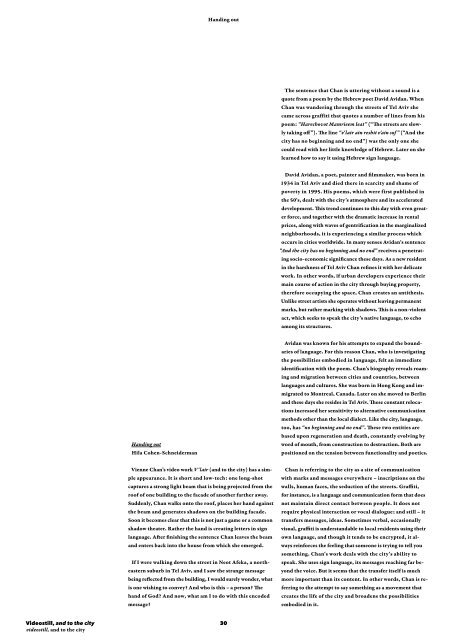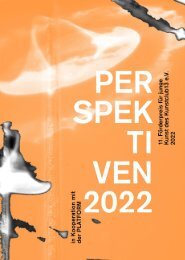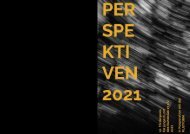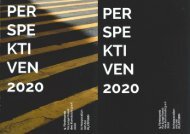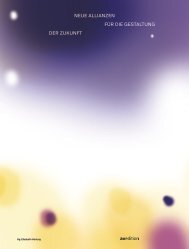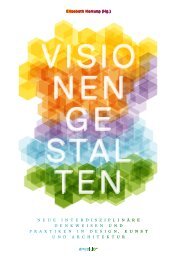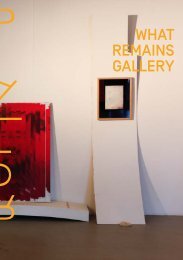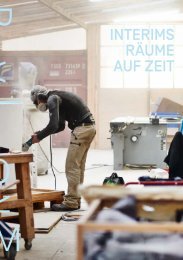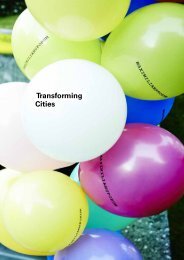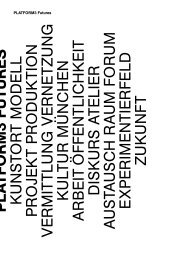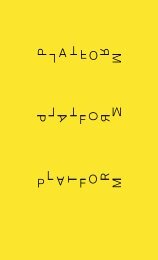DIE ÄSTHETIK VON BESETZUNG
B∃SETZT – Diskurse zu Kunst, Politik und Ästhetik „Sagt nicht was ihr wollt, seid einfach da!“ forderte Slavoj Žižek die Demonstranten der New Yorker Occupy-Bewegung auf. Geprägt durch die Hausbesetzungen der 68er Jahre, erfährt der Begriff der Besetzung heute als neue Form der Gesellschaftskritik eine Wiederbelebung. Begonnen an der Wallstreet, ziehen sich Besetzungen als „stille“ Äußerung des Protests rund um den Globus. Immer mehr Gruppierungen bedienen sich diesem Mittel, um auf gesellschaftliche Missstände hinzuweisen. Ob mit wirtschaftlichen oder soziographischen Hintergründen, mehr und mehr Occupy-Bewegungen tauchen im öffentlichen Raum auf. Im Vergleich zu herkömmlichen Demonstrationen zeichnet die Okkupation neue Wege Demokratie auszuüben und verleiht somit auch der Kritik eine neue, besondere Ästhetik. Diese ist mittlerweile bis in die Reihen der Kunst vorgedrungen. Bekannteste Beispiele bilden hierbei die Okkupation des MoMa in New York, der Boykott des Abu Dhabi Guggenheim oder das Pirate Camp der Venedig Biennale, um nur einige Formate zu nennen. Doch auch für kleinere, städtische Initiativen wird der „große Bruder“ aus New York zum Vorbild, lokale Interessen zu diskutierten. Zu einzigartiger Brisanz herangewachsen, avanciert die Besetzungsbewegung sogar zum Ausstellungsgegenstand der diesjährigen Berlin Biennale. Doch was ist das Besondere an der Besetzung? Was macht die heutige Gesellschaft so empfänglich für Occupy-Bewegungen? Welche Auswirkungen haben solche Besetzungen auf künstlerische Ausdrucksformen? Etablieren sie eine neue, künstlerische Ästhetik der Kritik? Welche Auswirkungen hat dies auf städtische Infrastrukturen, Literatur und künstlerische Ausdrucksformen? WIE nimmt sich Kunst öffentlichen Raum? Mit dem Projekt „B∃SETZT“ möchte PLATFORM3 diesen Fragen auf den Grund gehen. Beiträge aus den Bereichen Architektur, Kunst, Literatur und Soziologie verdeutlichen die perspektivische Vielfalt, in der dieses Thema Relevanz findet.
B∃SETZT – Diskurse zu Kunst, Politik und Ästhetik
„Sagt nicht was ihr wollt, seid einfach da!“ forderte Slavoj Žižek die Demonstranten der New Yorker Occupy-Bewegung auf. Geprägt durch die Hausbesetzungen der 68er Jahre, erfährt der Begriff der Besetzung heute als neue Form der Gesellschaftskritik eine Wiederbelebung. Begonnen an der Wallstreet, ziehen sich Besetzungen als „stille“ Äußerung des Protests rund um den Globus. Immer mehr Gruppierungen bedienen sich diesem Mittel, um auf gesellschaftliche Missstände hinzuweisen. Ob mit wirtschaftlichen oder soziographischen Hintergründen, mehr und mehr Occupy-Bewegungen tauchen im öffentlichen Raum auf. Im Vergleich zu herkömmlichen Demonstrationen zeichnet die Okkupation neue Wege Demokratie auszuüben und verleiht somit auch der Kritik eine neue, besondere Ästhetik. Diese ist mittlerweile bis in die Reihen der Kunst vorgedrungen. Bekannteste Beispiele bilden hierbei die Okkupation des MoMa in New York, der Boykott des Abu Dhabi Guggenheim oder das Pirate Camp der Venedig Biennale, um nur einige Formate zu nennen. Doch auch für kleinere, städtische Initiativen wird der „große Bruder“ aus New York zum Vorbild, lokale Interessen zu diskutierten. Zu einzigartiger Brisanz herangewachsen, avanciert die Besetzungsbewegung sogar zum Ausstellungsgegenstand der diesjährigen Berlin Biennale.
Doch was ist das Besondere an der Besetzung? Was macht die heutige Gesellschaft so empfänglich für Occupy-Bewegungen? Welche Auswirkungen haben solche Besetzungen auf künstlerische Ausdrucksformen? Etablieren sie eine neue, künstlerische Ästhetik der Kritik? Welche Auswirkungen hat dies auf städtische Infrastrukturen, Literatur und künstlerische Ausdrucksformen? WIE nimmt sich Kunst öffentlichen Raum?
Mit dem Projekt „B∃SETZT“ möchte PLATFORM3 diesen Fragen auf den Grund gehen.
Beiträge aus den Bereichen Architektur, Kunst, Literatur und Soziologie verdeutlichen die perspektivische Vielfalt, in der dieses Thema Relevanz findet.
Erfolgreiche ePaper selbst erstellen
Machen Sie aus Ihren PDF Publikationen ein blätterbares Flipbook mit unserer einzigartigen Google optimierten e-Paper Software.
Handing out<br />
The sentence that Chan is uttering without a sound is a<br />
quote from a poem by the Hebrew poet David Avidan. When<br />
Chan was wandering through the streets of Tel Aviv she<br />
came across graffiti that quotes a number of lines from his<br />
poem: “Harechovot Mamrieem leat” (“The streets are slowly<br />
taking off ”). The line “v‘lair ain reshit v‘ain sof ” (“And the<br />
city has no beginning and no end”) was the only one she<br />
could read with her little knowledge of Hebrew. Later on she<br />
learned how to say it using Hebrew sign language.<br />
David Avidan, a poet, painter and filmmaker, was born in<br />
1934 in Tel Aviv and died there in scarcity and shame of<br />
poverty in 1995. His poems, which were first published in<br />
the 50‘s, dealt with the city’s atmosphere and its accelerated<br />
development. This trend continues to this day with even greater<br />
force, and together with the dramatic increase in rental<br />
prices, along with waves of gentrification in the marginalized<br />
neighborhoods, it is experiencing a similar process which<br />
occurs in cities worldwide. In many senses Avidan‘s sentence<br />
“And the city has no beginning and no end” receives a penetrating<br />
socio-economic significance these days. As a new resident<br />
in the harshness of Tel Aviv Chan refines it with her delicate<br />
work. In other words, if urban developers experience their<br />
main course of action in the city through buying property,<br />
therefore occupying the space, Chan creates an antithesis.<br />
Unlike street artists she operates without leaving permanent<br />
marks, but rather marking with shadows. This is a non-violent<br />
act, which seeks to speak the city’s native language, to echo<br />
among its structures.<br />
Handing out<br />
Hila Cohen-Schneiderman<br />
Avidan was known for his attempts to expand the boundaries<br />
of language. For this reason Chan, who is investigating<br />
the possibilities embodied in language, felt an immediate<br />
identification with the poem. Chan’s biography reveals roaming<br />
and migration between cities and countries, between<br />
languages and cultures. She was born in Hong Kong and immigrated<br />
to Montreal, Canada. Later on she moved to Berlin<br />
and these days she resides in Tel Aviv. These constant relocations<br />
increased her sensitivity to alternative communication<br />
methods other than the local dialect. Like the city, language,<br />
too, has “no beginning and no end”. These two entities are<br />
based upon regeneration and death, constantly evolving by<br />
word of mouth, from construction to destruction. Both are<br />
positioned on the tension between functionality and poetics.<br />
Vienne Chan’s video work V‘lair (and to the city) has a simple<br />
appearance. It is short and low-tech: one long-shot<br />
captures a strong light beam that is being projected from the<br />
roof of one building to the facade of another farther away.<br />
Suddenly, Chan walks onto the roof, places her hand against<br />
the beam and generates shadows on the building facade.<br />
Soon it becomes clear that this is not just a game or a common<br />
shadow theater. Rather the hand is creating letters in sign<br />
language. After finishing the sentence Chan leaves the beam<br />
and enters back into the house from which she emerged.<br />
If I were walking down the street in Neot Afeka, a northeastern<br />
suburb in Tel Aviv, and I saw the strange message<br />
being reflected from the building, I would surely wonder, what<br />
is one wishing to convey? And who is this – a person? The<br />
hand of God? And now, what am I to do with this encoded<br />
message?<br />
Chan is referring to the city as a site of communication<br />
with marks and messages everywhere – inscriptions on the<br />
walls, human faces, the seduction of the streets. Graffiti,<br />
for instance, is a language and communication form that does<br />
not maintain direct contact between people. It does not<br />
require physical interaction or vocal dialogue; and still – it<br />
transfers messages, ideas. Sometimes verbal, occasionally<br />
visual, graffiti is understandable to local residents using their<br />
own language, and though it tends to be encrypted, it always<br />
reinforces the feeling that someone is trying to tell you<br />
something. Chan‘s work deals with the city‘s ability to<br />
speak. She uses sign language, its messages reaching far beyond<br />
the voice. But it seems that the transfer itself is much<br />
more important than its content. In other words, Chan is referring<br />
to the attempt to say something as a movement that<br />
creates the life of the city and broadens the possibilities<br />
embodied in it.<br />
Videostill, and to the city<br />
videostill, and to the city<br />
30


